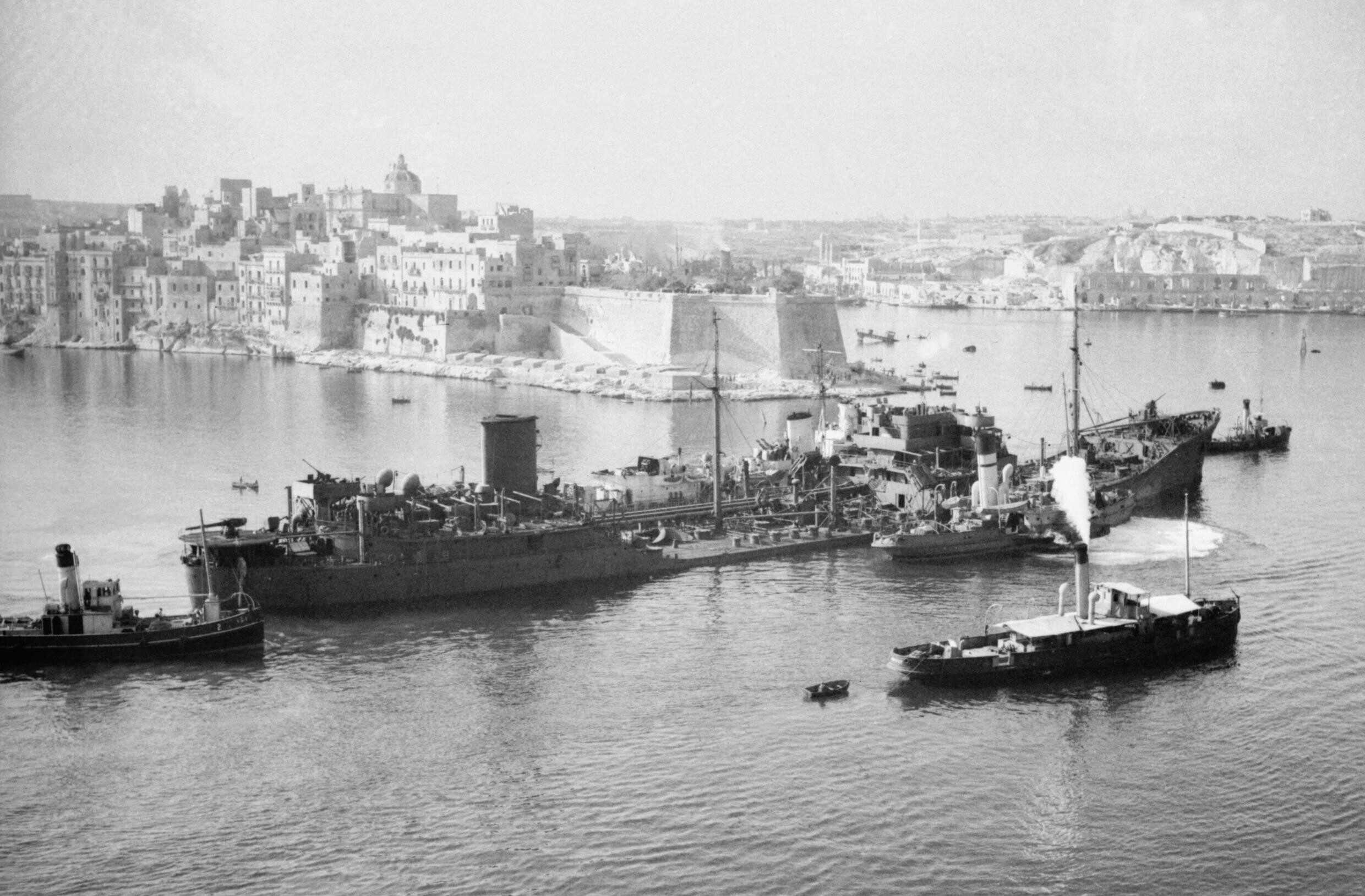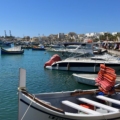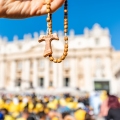Amidst the fury of World War II, as empires clashed and the Mediterranean became a battlefield of fire and steel, the Maltese islands stood alone—besieged, battered, and defiant. For years, they were the most bombed place on Earth, a fortress starved of supplies, suffocated by relentless Axis attacks, and left to stand or fall by their own endurance.
But Malta did not fall.
Through the inferno of war, its people endured, driven not just by military strategy but by a force more powerful than bombs and blockades: faith. They prayed as the skies burned, they dug shelters beneath their shattered cities, and they clung to the belief that they would survive. In return, history remembers them not as victims, but as victors—the islands that would not surrender, the people who turned suffering into strength.
This is their story.
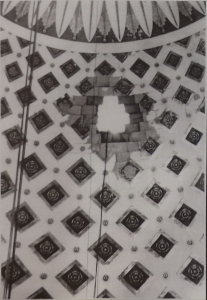
Under siege: The relentless storm of war
Between 1940 and 1942, Malta became the target of one of the most intense aerial bombardments of World War II. Positioned at the heart of the Mediterranean, the islands were a vital stronghold for the British, a launchpad for operations against Axis supply lines to North Africa. But this made them a prime target for Germany and Italy, who sought to break Malta and secure control of the sea.
For two years, Malta endured a storm of destruction. The Luftwaffe and the Regia Aeronautica sent wave after wave of bombers, determined to reduce the islands to ruin. Cities were leveled, harbors left in flames, and supply lines choked off. By April 1942, Malta had suffered an unimaginable toll—over 6,700 tons of bombs had fallen in a single month, more than had been dropped on London during the Blitz.
And yet, the people fought on.
They carved out new lives beneath the earth, transforming catacombs into homes, tunnels into hospitals. They rationed what little food remained, shared what they had, and held firm. Amid the rubble, priests still celebrated Mass, and the faithful still gathered to pray, even as explosions tore through the landscape.
Then, on April 15, 1942, came an act of recognition that would forever mark Malta’s place in history. King George VI awarded the entire population the George Cross—Britain’s highest civilian honor for valor, recognizing the collective bravery of an entire nation. Never before had such an honor been given to an entire people. Today, that cross remains at the heart of Malta’s flag, a silent reminder of the fire they endured.
The Order of Malta: Healing amid the chaos
While the bombs fell, another force moved through the shadows of war—the Sovereign Military Order of Malta. Their mission, though less heralded than the battles fought in the skies, was no less vital. As they had done for centuries, the Knights of Malta became healers and protectors, tending to the wounded, sheltering the displaced, and offering hope where none remained.
With the islands’ medical infrastructure devastated, the Order’s historic role as healers was reignited. The Sacra Infermeria, once one of the most advanced hospitals in Europe, reopened to tend to soldiers and civilians alike. Across Malta, members of the Order helped convert ancient underground tunnels into makeshift medical centers, treating the wounded even as bombs thundered overhead.
Mary’s convoy that saved Malta
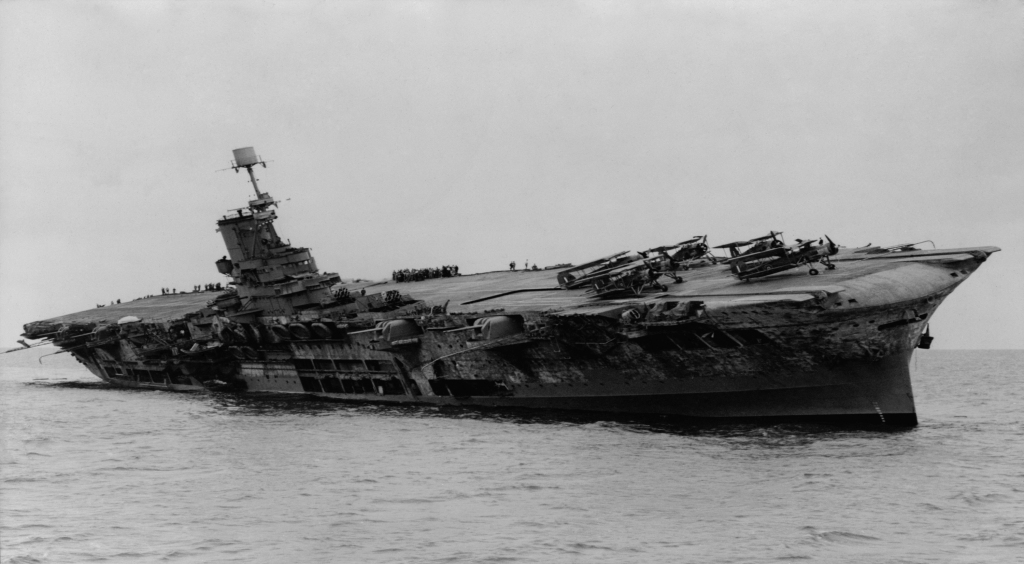
By mid-1942, Malta was starving. The Axis blockade had nearly strangled the islands, leaving supplies at critically low levels. Without reinforcements, the archipelago would soon collapse.
Then came Operation Pedestal— the Santa Marija (Saint Mary) Convoy, renamed as thanksgiving to the Blessed Virgin Mary. A desperate attempt by the British to break the blockade, it sent fourteen supply ships through enemy-controlled waters, knowing that most would never reach their destination. The Axis forces attacked mercilessly, sinking nine of the vessels. But five made it through—including the Ohio, a fuel tanker limping into Valletta’s Grand Harbour, its hull shattered but still afloat.
It was enough.
Among those helping to distribute the precious cargo were volunteers from the Order of Malta, ensuring that food, fuel, and medicine reached those who needed it most. The convoy’s arrival on August 15—the Feast of the Assumption—was a sign, a moment when divine intervention had spared the islands once again.
Malta and the Jubilee: The Fire that refused to die
Beyond Malta’s shores, the Order of Malta played another, quieter role. In the chaos of war-torn Europe, its hospitals and embassies became refuges for those fleeing Nazi persecution. In Rome, the Order used its sovereign status to protect Jewish families, political dissidents, and Allied prisoners of war, issuing false documents and sheltering them from deportation. In Germany, knights and volunteers risked their lives to tend to the sick in concentration camps, offering what little comfort they could in a world devoid of mercy.
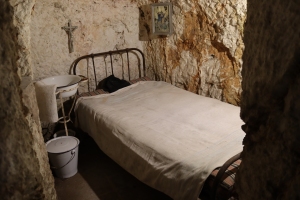
The suffering of the Maltese people in World War II carries profound meaning in the context of a Jubilee Year. The Jubilee is a time of renewal, of emerging from hardship into grace. And Malta, more than most, understands what it means to survive fire and walk forward into the light.
The islands’ survival was not just a military triumph; it was a testament to the endurance of the human spirit. A reminder that faith can outlast war, that hope can persist even when the world burns
Bormla in Wartime: A City Scarred and Steadfast
By the early 20th century, Bormla had already undergone significant transformations due to the expansion of British naval infrastructure. The Royal Navy Dockyard, established in the 19th century, brought both prosperity and rapid urbanization, but also spelled the irreversible loss of much of the city’s premodern fabric. Whatever heritage survived this development frenzy would later face near annihilation during World War II.
From 1940 to 1942, Malta was one of the most heavily bombed regions on Earth. Its strategic location made it a critical Allied base—and a prime Axis target. Bormla, as part of the harbor complex, bore the brunt of this aerial onslaught. More than 6,700 tons of bombs fell across Malta in April 1942 alone, devastating towns like Bormla that lay in proximity to the dockyards.
The Collegiate Church of the Immaculate Conception, the spiritual and architectural heart of Bormla, narrowly escaped destruction. Despite more than 200 bombs falling in its immediate vicinity, the church remained standing. In anticipation of the worst, the community had moved the revered titular statue of the Immaculate Conception and its altarpiece to the Basilica of St. Helen in Birkirkara for safekeeping. Once the war ended, and the church was found largely intact, a massive pilgrimage returned these sacred objects to their home on November 19, 1944—a symbolic act marking both survival and continuity.
The miracle was resilience

1944 after the parish church was miraculously spared during massive bombings Courtesy of the Cospicua Parish ©VisitMalta
This post-war procession, later known as the National Pilgrimage of the Immaculate Conception, was attended by thousands from across Malta and Gozo. The event resonated deeply with a population that had lived through years of scarcity, destruction, and the near-collapse of daily life. In local memory, this moment has come to symbolize not only spiritual gratitude but also the unyielding civic identity of Cospicua.
While the term “miracle” is often invoked, its real power lies in how it encapsulates a shared cultural resilience—rooted not solely in faith, but in community endurance amid catastrophe.
Other vestiges of Bormla’s past did not fare as well. Many churches, chapels, and troglodytic religious sites—already weakened by age—were either destroyed outright or severely damaged by the air raids. The ancient Church of St. Helen, with its 7th-century origins and Byzantine connections, was among those affected. Although portions of the church’s troglodytic architecture, including the chancel and apse, survived, its structure was largely lost to the war.
The human toll was accompanied by another quieter loss—mass migration. The destruction of homes and industries, combined with post-war economic uncertainty, led to a dramatic population shift. Bormla’s once-thriving maritime culture faded, its stories preserved less through built heritage than through oral tradition. Like Homeric verse, the city’s memory lived on in fragments—passed from generation to generation, held aloft by community will rather than stone.
Walking in the footsteps of defiance
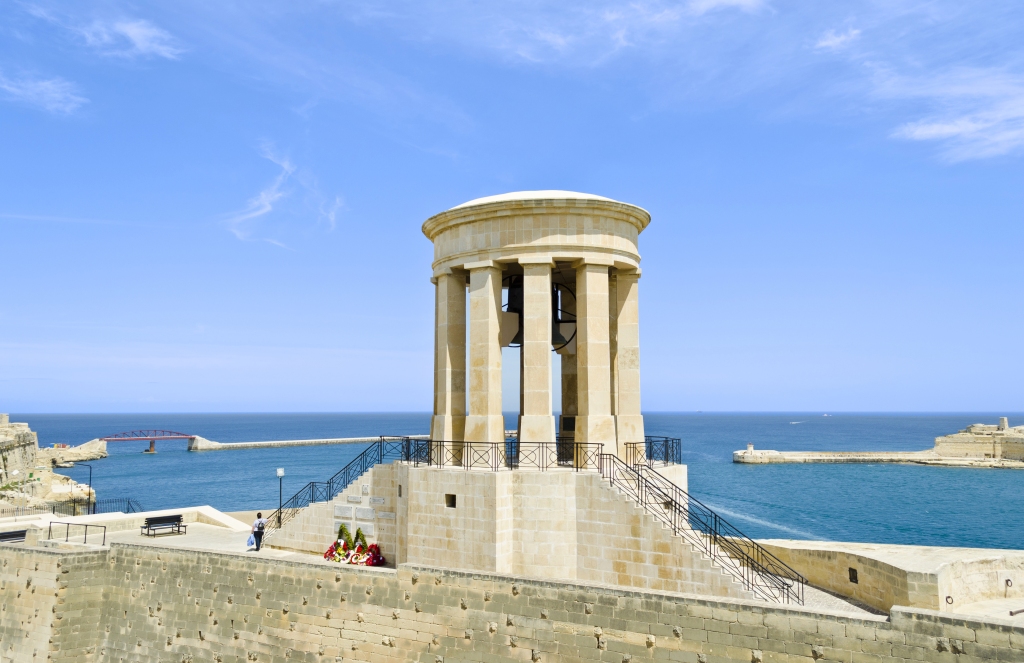
Today, Malta stands as a monument to those who endured. Its fortifications, its underground shelters, even its churches bear the scars of war—but they also bear witness to resilience.
To walk through Valletta is to walk through history, to stand in the places where a nation refused to break. The tunnels beneath Mdina, the ruins of bombed-out chapels, the memorials to those who held the line—each is a waypoint in a pilgrimage of remembrance.
To visit the Co-Cathedral of Saint John is to kneel where knights once prayed before battle, and where, centuries later, their successors tended to the wounded of a new war. To see the George Cross, preserved in the National War Museum, is to witness the legacy of a people who stood unbowed in the face of annihilation.
Malta’s Legacy: A light that never went out
The story of Malta in World War II is not just a tale of destruction and survival—it is a lesson for the world. It is a reminder that even when war seeks to crush the soul, faith and hope can fortify it. That when history turns to fire and ruin, there are still those who will stand, who will endure, who will rebuild.
And so, Malta remains what it has always been—a beacon in the Mediterranean, a fortress not just of stone, but of spirit. The islands that refused to surrender. The fire that refused to die. The light that still burns.
The Great Siege of Malta: A collective pilgrimage of Faith and Resistance



